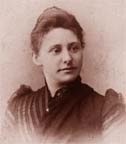
Wilhelm Kühne
WILLY KUHNE (1837-1900), German physiologist, was born at Hamburg on the 28th of March 1837. After attending the gymnasium at Luneburg, he went to Göttingen, where his master in chemistry was F. Wdhler and in physiology R. Wagner. Having graduated in 1856, he studied under various famous physiologists, including E. Du Bois-Reymond at Berlin, Claude Bernard in Paris, and K. F. W. Ludwig and E. W. Brucke in Vienna. At the end of 1863 he was put in charge of the chemical department of the pathological laboratory at Berlin, under R. von Virchow; in 1868 he was appointed professor of physiology at Amsterdam; and in 1871 he was chosen to succeed H. von Helmholtz in the same capacity at Heidelberg, where he died on the 10th of June 1900. His original work falls into two main groups - the physiology of muscle and nerve, which occupied the earlier years of his life, and the chemistry of digestion, which he began to investigate while at Berlin with Virchow. He was also known for his researches on vision and the chemical changes occurring in the retina under the influence of light. The visual purple, described by Franz Boll in 1876, he attempted to make the basis of a photochemical theory of vision, but though he was able to establish its importance in connexion with vision in light of low intensity, its absence from the retinal area of most distinct vision detracted from the completeness of the theory and precluded its general acceptance.

Kühne is the central character in the story of Optography.
He experimented extensively with the aid of his assistants in the physiology depart of Heidelberg University, see image at the bottom of this page. He received Gustav Erhard Reif’s eye balls to uncover The Human Optogram. His ‘Optographic Chamber’ was the starting point for my ‘Chamber’. His detailed experiments on a whole array of species of animal show numerous failures and and limited successes in creating optograms; observations of the shade of purple bleached on to the retina showed a meticulous mind.
I am not sure I would have gotten on with him as he appeared to be somewhat reactionary and also displayed sexism (not unheard of then) in preventing a female student from furthering her career in his department of the University “never allow skirts in his lectures” referring to Ida Henrietta Hyde see image at the bottom of this page.

